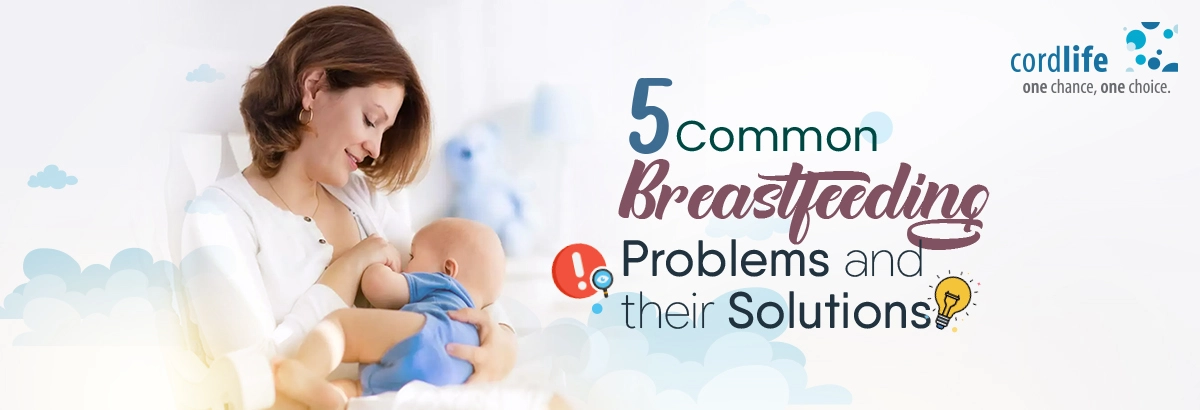Table of Contents
You’ve waited for nine long months with a bated heart to hold your newborn in your arms. Undoubtedly, you made a connection of love and care while your baby was inside you. However, now that you are a mother and hold your little one in your arms, you make another connection between a mother and child by breastfeeding.
Breastmilk is a source of nutrition for your newborn. It helps in boosting your baby’s immunity and further helps in making your baby healthy.
That said, both of you are new to the breastfeeding method. It will take a little time for both of you to learn. In the learning stage, both of you might get a few hiccups. Yes! You might have problems. But every problem has solutions. So does the breastfeeding problem.
Sored, Cracked, or Bleeding Nipples
When you start breastfeeding, sore or sensitive, or cracked nipples are some of the common signs. Studies have shown that 38% of new moms have this problem while feeding their babies, and the soreness of the nipples is common in the very first week. This happens mostly because your little one in your lap isn’t positioned and attached properly while being breastfed, or he or she is not exactly latching, but biting onto your nipples. Alternately, if you’re wearing inners made from man-made fabric that usually absorbs moisture, making the skin dry. Using soaps might worsen the condition by removing the natural oils from the skin, and you might feel a little bit of pain
Tips to Deal With Sore, Cracked, or Bleeding Nipples
Changing your breast pads after every feeding session, wearing cotton bras (they will allow air to flow smoothly in and out of the breasts), and do keep your feeds long enough (you can surely take just a little bit of rest in between) can help in keeping the sores and bleeding lower, as well as the cracked parts healed. Moreover, encourage your little one to latch well and healthy by gently holding your newborn’s chin down and allowing the breasts to feed him or her. All you need to notice is that your nipples along with the areola should be dug inside your infant’s mouth, while he or she’s latching. That is indeed a good and healthy latch.
Insufficient Breast Milk
Most of the new moms produce enough milk during breastfeeding. However, there are times, especially in the early stage of breastfeeding when the milk supply is not sufficient as you may not be able to meet your little one’s needs. Along with this, when your baby is not attached well to your breasts, such is the scenario.
Tips to Deal With Insufficient Milk Supply
You can boost your breastmilk supply by breastfeeding frequently (8 to 12 times a day)5 and from both sides. (Allow your little one to decide when to stop). Pump your breasts in between your feeds. Have lactation cookies with your lactation specialist’s advice. Moreover, according to experts from the Canadian Breastfeeding Foundation, you can include garlic, fenugreek, fennel, etc in your regular postpartum diet.
Breast Engorgement or Breast Fullness
Several days after birth, the breasts become full due to the slow buildup of blood and milk. This is again a sign of your milk flowing into your breasts naturally. Also, known as breast engorgement, it makes your breasts swollen, hard and painful, thus making it difficult for your little one to latch on to your breasts correctly.
Tips to Deal With Breast Engorgement
Breast engorgement, although uncomfortable for you is a natural part of childbirth. Therefore, continuously feeding your child and making your breasts empty after every feeding session may be helpful. Once you’re done with your feeding session wean your baby slowly. In addition to this wear a supportive bra and apply cold compresses. You must also ensure your little one has a good, and healthy latch.
Blocked Milk Ducts (Clogged Milk Ducts)
In this situation, the milk is unable to flow from the breasts to your nipples. As a result, your breasts feel tender, hot, red and painful, along with a lump near your skin. You might sometimes notice a small white dot at the opening of the duct.
Tips to Deal With Milk Ducts
You can take a warm bath for 10 to 20 minutes. You might have to change the feeding position quite often and massage the blocked ducts. Wear loose-fitting cotton clothes and try not to wear inners.
Breast Infection and Illness
Due to clogged milk ducts, there might be infections in your breasts, giving rise to swelling, lumps, redness, and pain. This infection is also known as Mastitis, which can often make you feel ill. You may also have a fever of around 101 F or more.
Tips to Deal With Breast Infection and Illness
For breast infection and illness, you might have to visit your lactation specialist and take medicines from him or her. The specialist might also come up with some home remedies for you in which you might apply warm compresses and wear comfortable inners.
There are several other breastfeeding problems, like these that can make the most beautiful experience of being a new mom difficult. But, keep your cool! Here are a few ways that can help you overcome your breastfeeding challenges. Your healthcare provider might share some more breastfeeding tips for your help.
So, enjoy breastfeeding!
